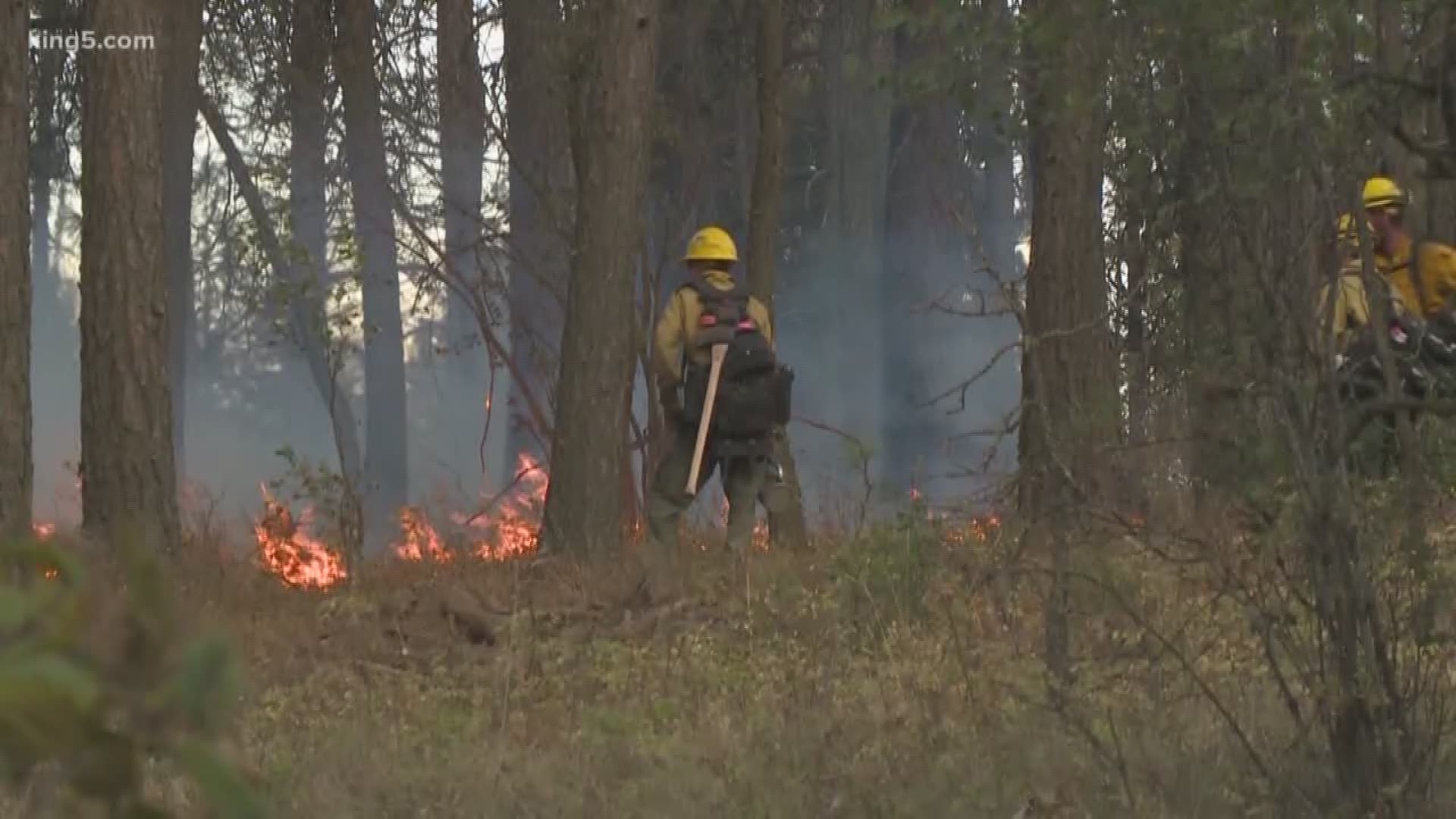As of Monday morning, July 22, Washington state has experienced 1,006 wildfires in 2019.
About 30 percent of those fires were on the west side of the state. That's 299 wildfires for western Washington before August.
The Washington Department of Natural Resources said a wetter than average July helped minimize fire risk. But what is traditionally the warmest and driest part of the year is just getting started.
This year brought growing concern for western Washington after a much earlier start to the typical wildfire season. April 15 is considered the official start of wildfire season. But as of March 2019, there were already 51 wildfires west of the Cascades.
The perception is that wildfires are more of a problem in central and eastern Washington. But 2018 saw 40 percent of the state's wildfires start in western Washington.
East Jefferson Fire & Rescue Chief Jim Walkowski said his department fought their first wildfire of the year in the first week of April.
"So there’s an example of things starting earlier in our community.” He also said April ended with a 15-inch deficit in rain.
Walkowski has fought fire on both sides of the state, in both climates. He continues to ramp up his department’s ability to fight brush and forest fires, and is also conducting community education sessions to help residents understand their risk, and use techniques called FireWise to help them protect their homes and property.
His department also uses a network of weather stations to measure fire conditions around the county, which runs from Hood Canal to the coast.
“Obviously, our weather is changing. Our microclimates are changing, and what you see in one climate, may be vastly different than another in this county,” he said.
The forest growth on Washington's west side is much different than the forests and more frequent fires east of the Cascades.
This is the first installment of a series on western Washington wildfire risk. All week, KING 5's Glenn Farley will take a look at the growing concern of wildfires in western Washington, how science can help predict the potential for future fires, and what you can do to lower risks at your home and property.

